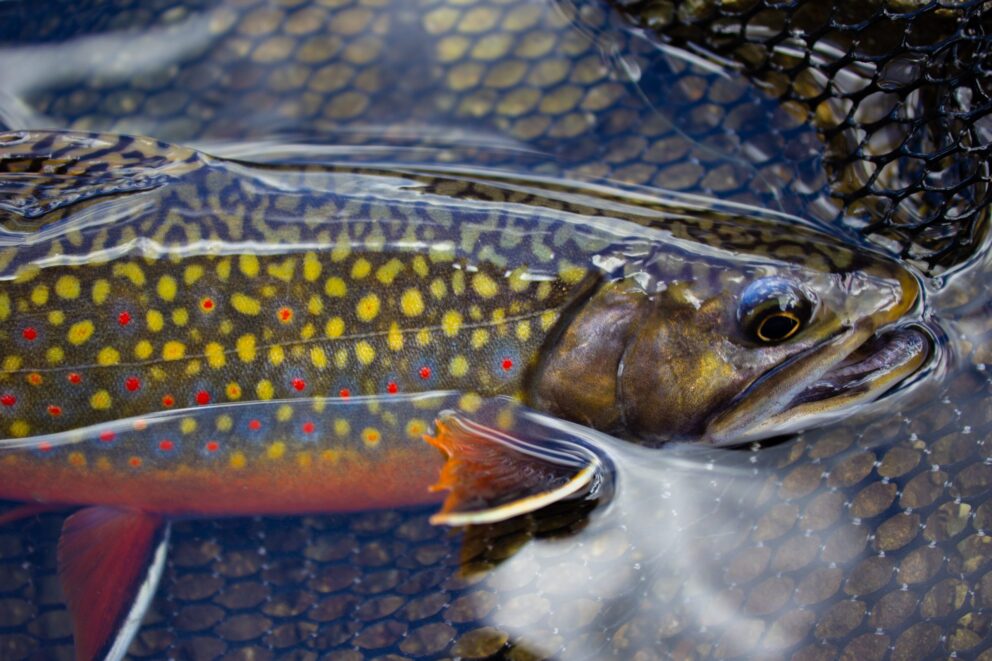- SCIENTIFIC NAME
- Salvelinus fontinalis
- CLASSIFICATION
- Fish
- LIFE SPAN
- 8-16 Years
- SIZE
- 12-23” | 1-6lbs
- STATE CONSERVATION STATUS
-
- Unprotected
- FEDERAL CONSERVATION STATUS
- Least Concern
- GAME STATUS
- Game
- Washoe
- Humboldt
- Pershing
- Churchill
- Mineral
- Lyon
- Douglas
- Carson City
- Storey
- Elko
- Lander
- Eureka
- White Pine
- Esmeralda
- Nye
- Lincoln
- Clark
Habitat & Range
Brook Trout are native to eastern and northeastern North America along the Atlantic seaboard and throughout the Appalachian Mountains. It has been introduced extensively throughout North America. It occurs in about 234 mountain streams in Nevada where its abundant in cooler water at higher elevations. Also found in Ruby Mountain alpine lakes and other coldwater lakes
Threats
- Bacterial Cold Water Disease
- BKD- Bacterial kidney disease
- Diseases in Hatchery Stocks: IHN-Infectious hematopoietic necrosis
- VHS-Viral hemorrhagic septicemia
- Whirling Disease
Natural History
Described as a voracious feeder that is capable of consuming large numbers of seasonal aquatic and terrestrial insects, the Brook Trout will also feed on zooplankton, crustaceans, worms and smaller fish. Brook Trout are typically found under cover of rocks and logs in cold water, spring-fed streams, rivers and lakes. Spawning in October and November, depending on water temperatures, the egg incubation period is 3-4 months before they hatch into sac fry, and will not begin to leave the redd until the yolk sac is absorbed.












